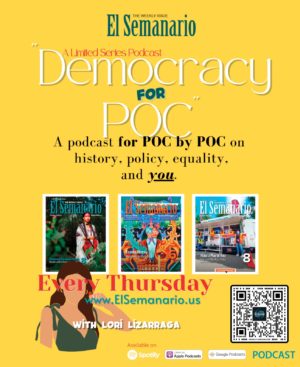Posted Jan. 23, 2025
House Bill 22-1244, the Public Protections from Toxic Air Contaminants Act, brought forth long-overdue protections to communities disproportionately affected by toxic air pollution in Colorado. GreenLatinos actively participated in the rulemaking process without legal representation for the newly introduced Regulation 30, ensuring that the voices of Latino communities and impacted communities are centered in the implementation of this landmark legislation.
“This is a big day for environmental justice and implementation of the first law that North Denver Communities, including myself, advocated for beginning 7 years ago. We are moving towards Health Based limits for pollution over permits to pollute by industry. The commission heard the voices of the most impacted!” said Ean Thomas Tafoya, GreenLatinos Colorado State Director, “We look forward to the next phases of the rule, including setting health based limits and requiring control technologies.”
This is a big day for environmental justice and implementation of the first law that North Denver Communities, including myself, advocated for, beginning 7 years ago.”
Ean Thomas Tafoya, GreenLatinos
The Air Quality Control Commission (AQCC) was directed to identify up to five Priority Toxic Air Contaminants (PTAC) and develop health-based standards for each (that rulemaking will take later this year). These standards, subject to approval by the Colorado General Assembly, will guide the creation of critical emission control regulations.
In Colorado, many of the state’s most polluted counties are also identified as High Latino Counties, highlighting a stark environmental inequity. This effort represents a critical step toward environmental justice and healthier futures for communities long burdened by environmental harm.
GreenLatinos successfully advocated for replacing Acrolein with Formaldehyde as a Priority Toxic Air Contaminant (PTAC) due to its higher cancer risk. The organization also secured a commitment to add new harmful chemicals on a rolling basis, ensuring the law remains responsive to emerging threats.
The five air toxics identified in the rule have unique sources and can cause harmful health impacts:
– Benzene: emitted during oil and gas production, fuel combustion, from gasoline stations, and from industrial activities such as waste disposal and cement manufacturing. Long-term exposure to benzene can cause cancer, blood and bone marrow disorders, and can cause reproductive impacts such as chromosomal abnormalities.
– Ethylene oxide: used to sterilize medical equipment for use in hospitals and other medical settings. Long-term exposure to ethylene oxide can lead to cancer, reproductive effects, and respiratory irritation.
– Formaldehyde: emitted during fuel combustion from sources such as engines, industrial boilers, and residential wood burning. It is also emitted during other industrial processes such as pulp and paper products manufacturing and surface coating. Chronic exposure to formaldehyde can cause cancer, asthma, and irritation of the eyes, nose, and throat.
– Hexavalent chromium compounds: emitted from sources such as coal-fired power plants, glass manufacturing plants, and during the coating of metal parts. Long-term exposure to hexavalent chromium compounds can result in respiratory issues and cancer.
– Hydrogen sulfide: emitted by sources such as petroleum refineries, landfills, wastewater treatment plants, asphalt manufacturing, and gas processing plants. Long-term exposure to hydrogen sulfide can lead to health impacts such as low blood pressure, headache, chronic cough, and psychological disorders.
The following are links to 2025 Meeting Documents – Hearing Notices
and Rulemaking Hearing – Regulation Number 30.
- Clean Electricity: A Prescription for Better Health - January 31, 2025
- Districts Share Plans in Case Immigration Officials Show Up At Schools - January 31, 2025
- Denver Mayor Says City Will Sue the President’s Administration If ICE Agents Detain Immigrants at Schools - January 31, 2025






